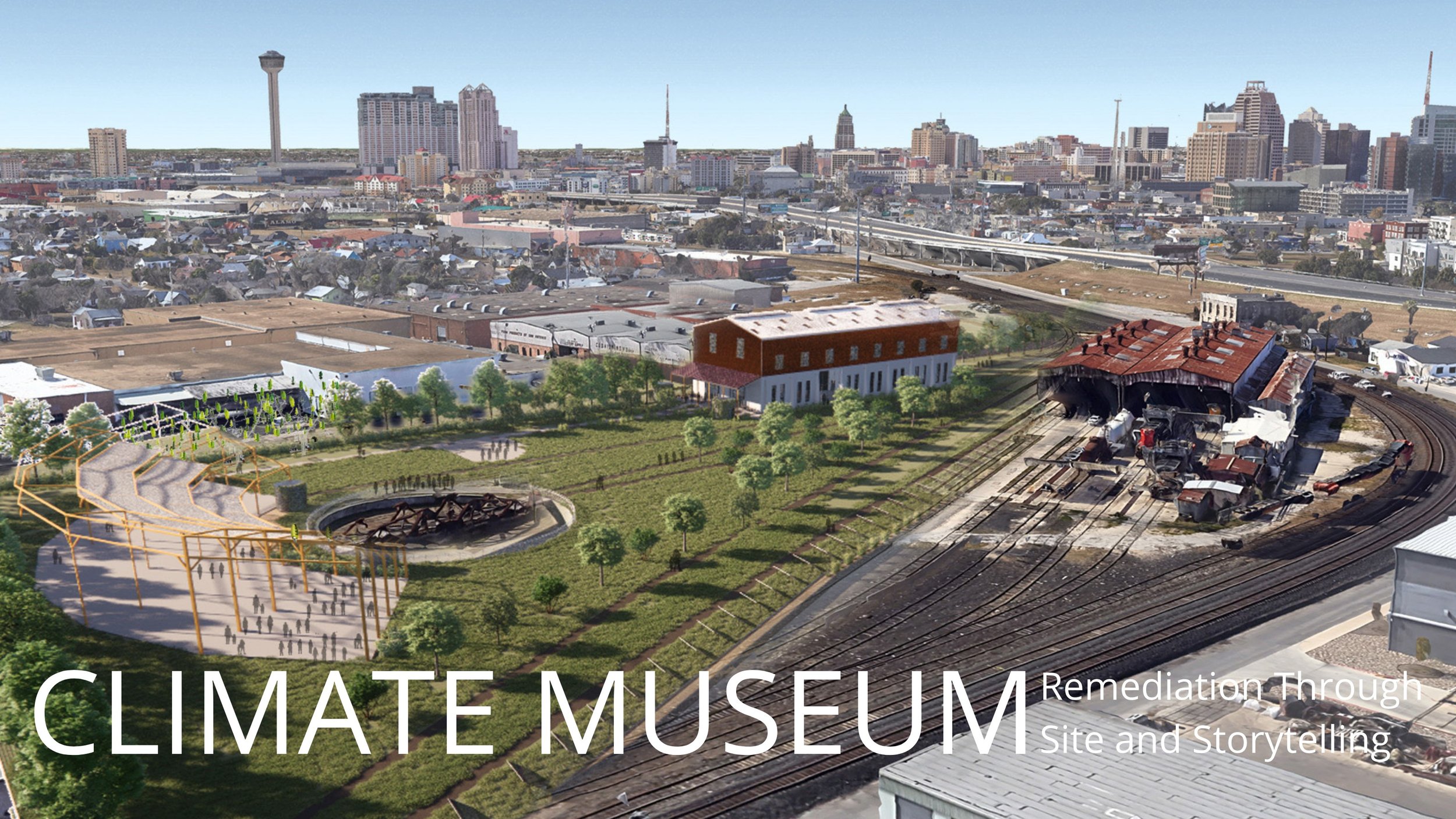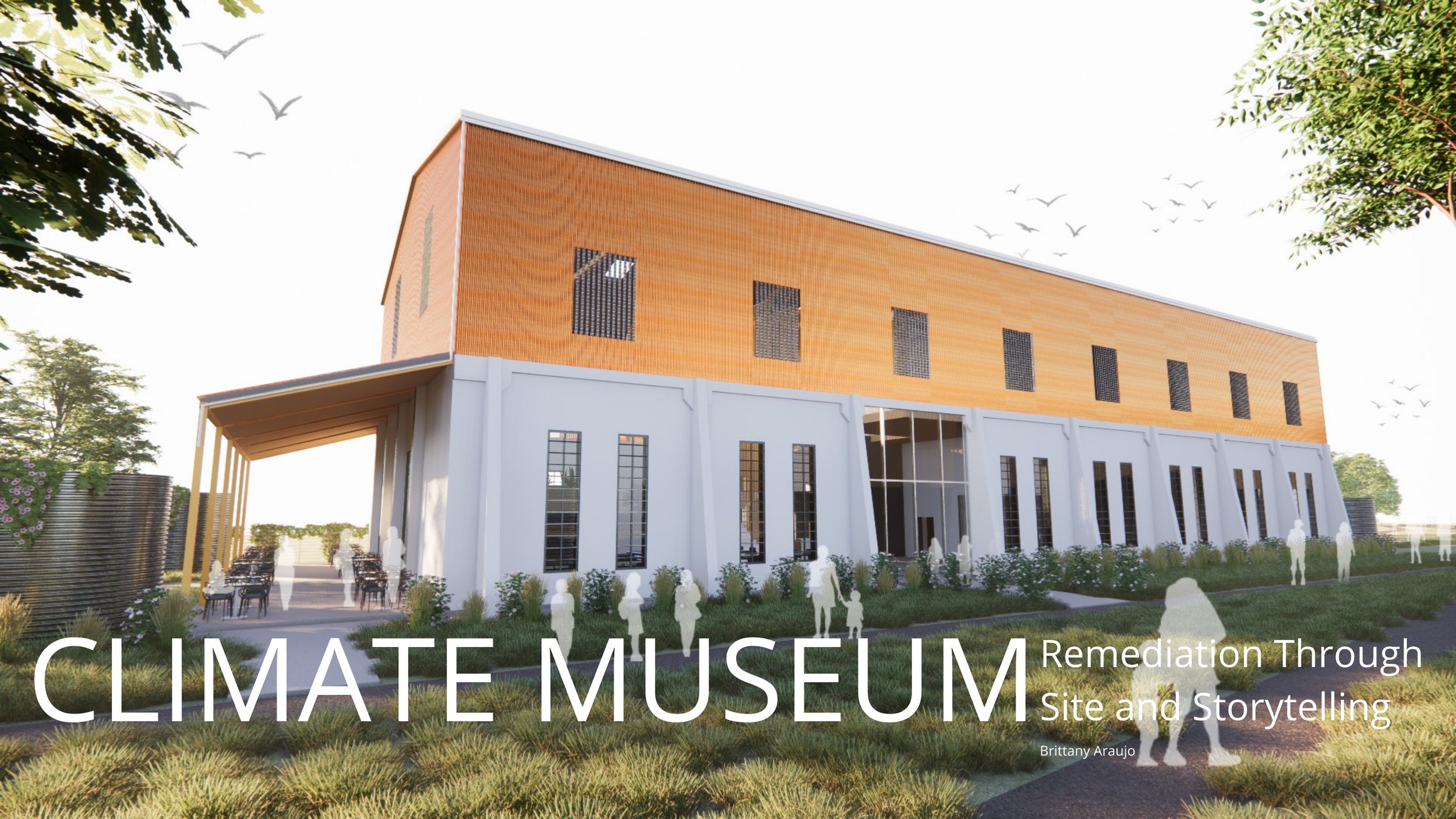
Located just east of the tracks in downtown San Antonio sits an active research facility for the Southwest Research Institute and their efforts in testing alternative fuel for locomotive engines. But before it was a research facility, it was an active site for the Union Pacific, serving as a critical spot for their operations and maintenance. Since it’s operations quietly began in the 1990’s, the lowkey facility still operates, but is not currently open to the public. The render showcased above was once the maintenance shed that houses the crane to hoist the locomotives in the air, waiting to be assessed.
At a time where conversations around climate change and various sustainable efforts we can champion forward are being interwoven into the fabric of our architectural education, I found this as a unique case study to explore how structures and sites once used to accelerate these environmental changes and be adapted and reused as mitigation tools in the efforts of educating the public around what we can do as a community. And thus, the Climate Museum was proposed in 2023.
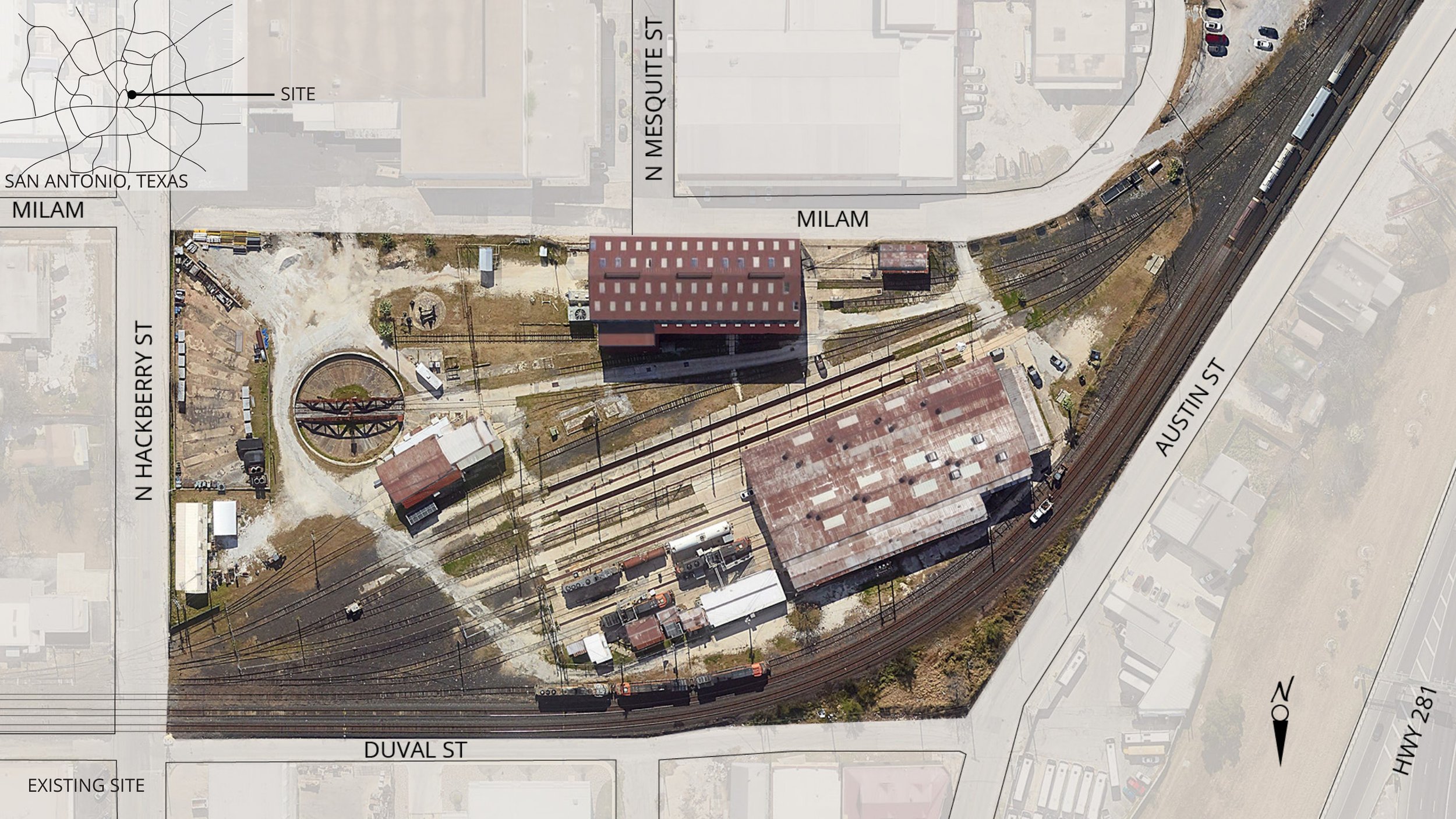

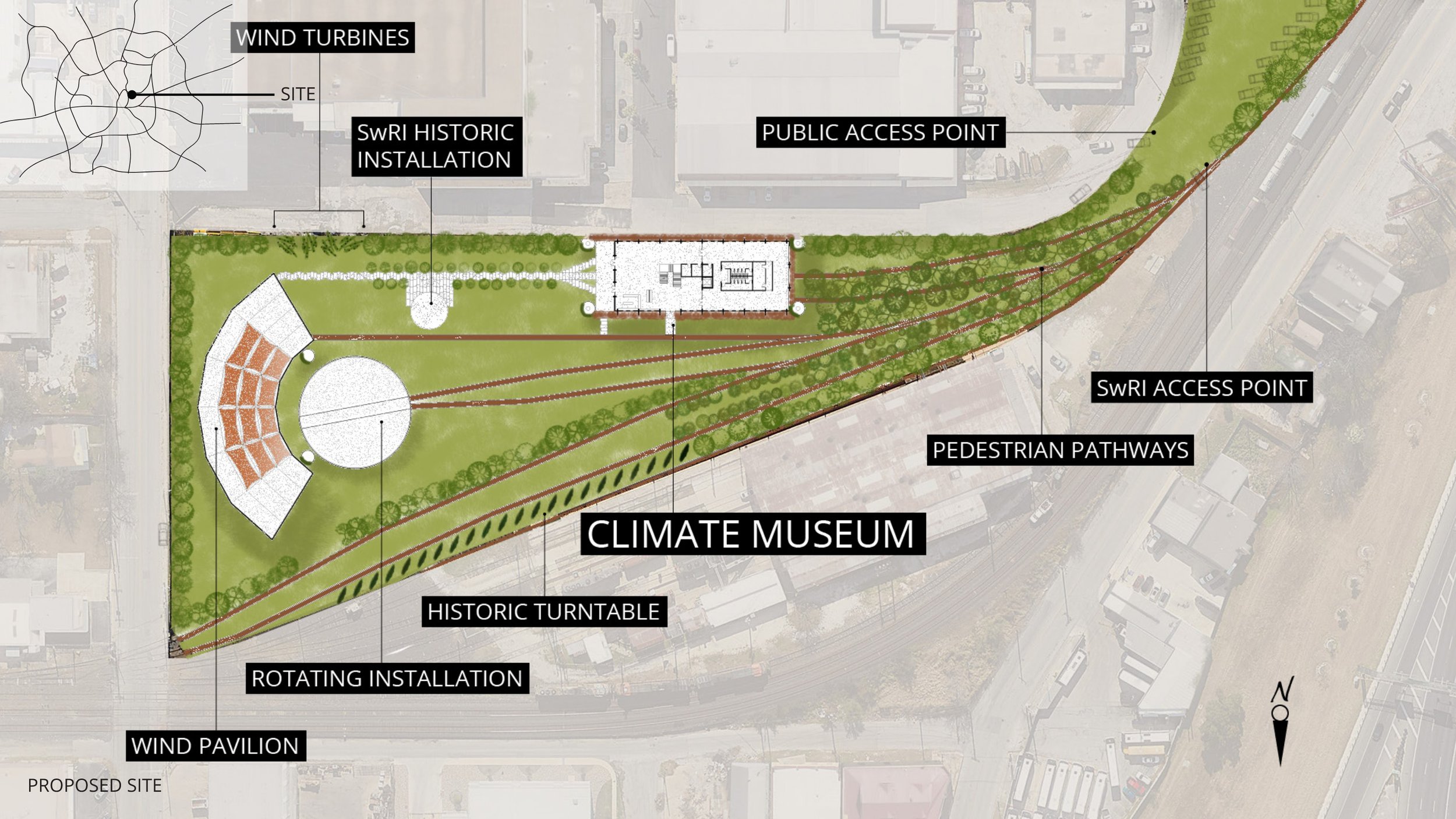
The Climate Museum will house a two-story exhibition space dedicated to educating the public around the historical use of fuel, its impact on our environment at all scales, and the future forward with exploring up-and-close with alternative fuels used today. As you arrive at the modest entrance of the site, patrons will navigate through native vegetation along the existing inactive tracks, both a nod to an important local development just north of downtown, and also the history of the routes itself.
There are three main attractions to the site, each with different levels of activation to maximize the site use, while also being sensitive to the active portion that remains to the south. The historical turntable will be restored to its historical glory, and serve as the focal point for rotating exhibitions. The pavilion standing directly west will offer shade to patrons, as well as entertainment space for public activation and traveling groups. The third attraction is filtered throughout the site, where people can be surrounded by the exterior alternative energy strategies - wind, solar, natural gas and water collection.
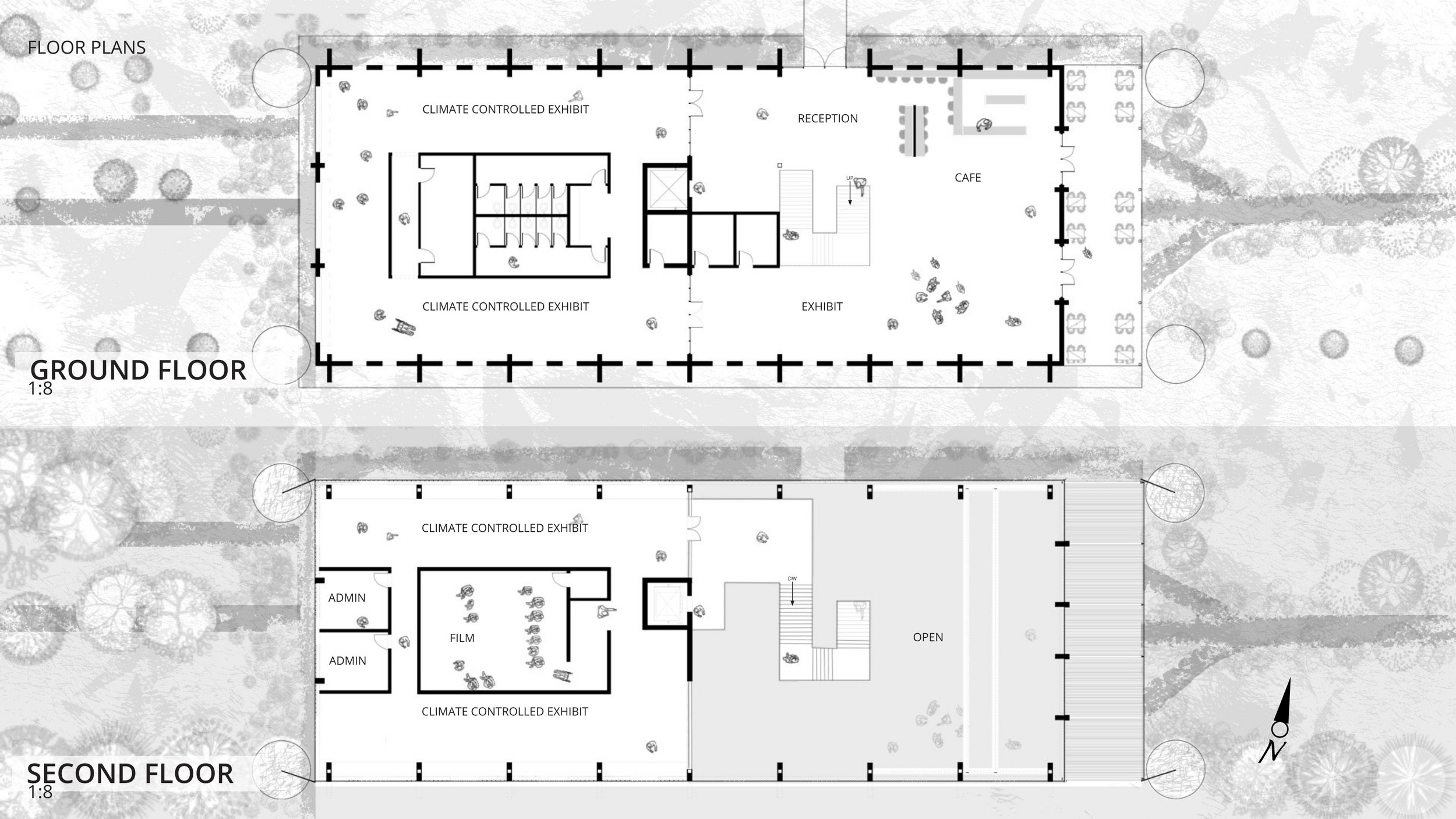

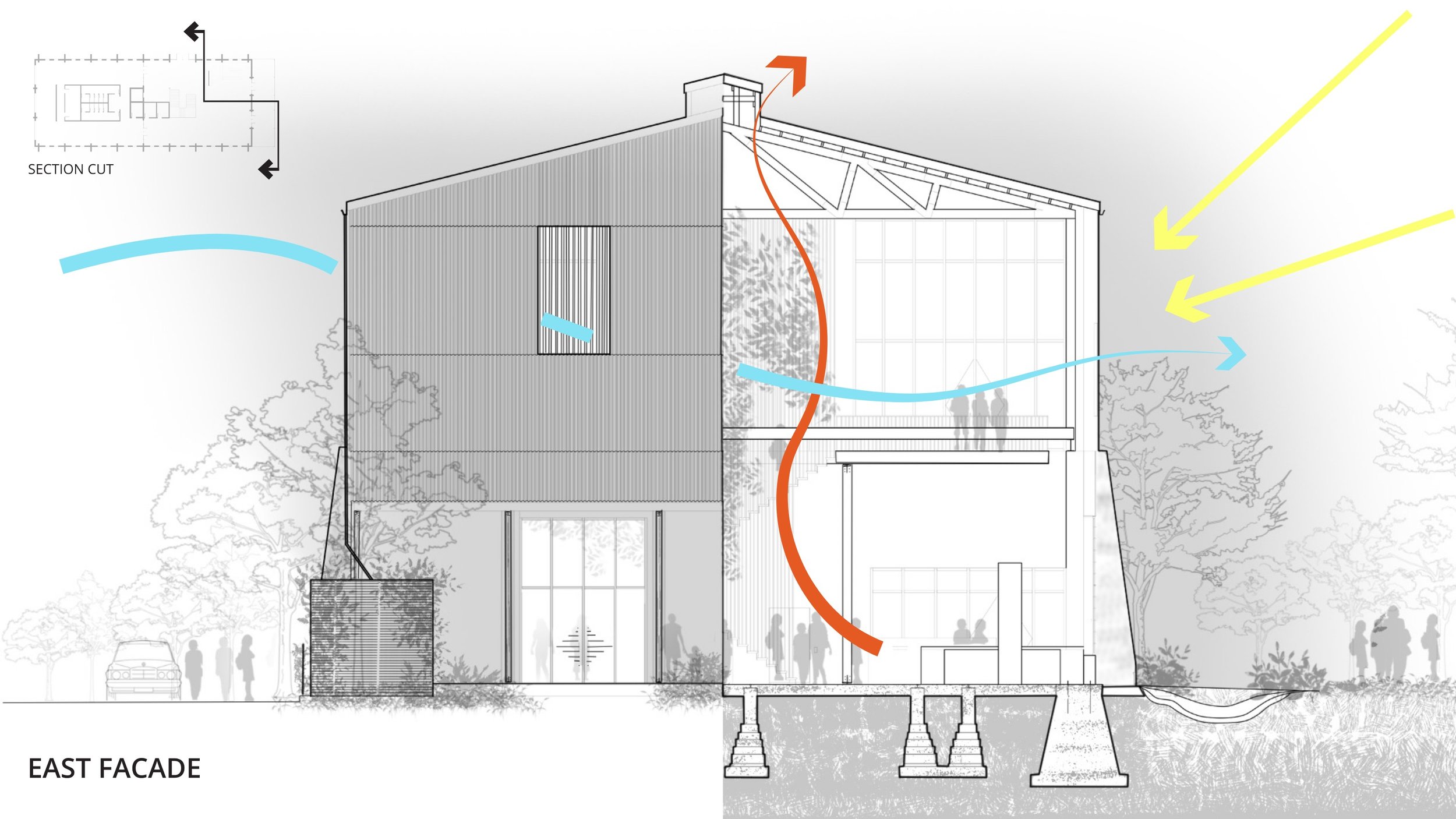
The existing shed, naturally set on a grid system and foundationally strong enough to withstand the weight of several locomotives and its maintenance equipment, lent itself perfectly to section off into three parts - the upstairs historical gallery, the downstairs new wave gallery, and the public cafe and lobby where the exhibits flourish and flow directly out of the building into the courtyard. The building itself will not only display interactive pieces, but the building itself will serve as its own case study of renewable and event regenerative energy. Patrons can experience the natural lighting, natural ventilation in the atrium space, and the rain water collection systems. As they exit the museum and navigate towards the pavilion and turntable, they will also get to experience strategic locations of bioswales, rainwater harvesting, and ample native vegetation - all of which are completely accessible to most in their residential space.
Further exploration around its developmental phases and economic impact on the immediate east side is highly encouraged. Not only that, but further exploration is necessary in the community impact. This historical site is charged with mixed history and a great deal of it should be considered for its strategic implementation in the fabric of this new venture.
